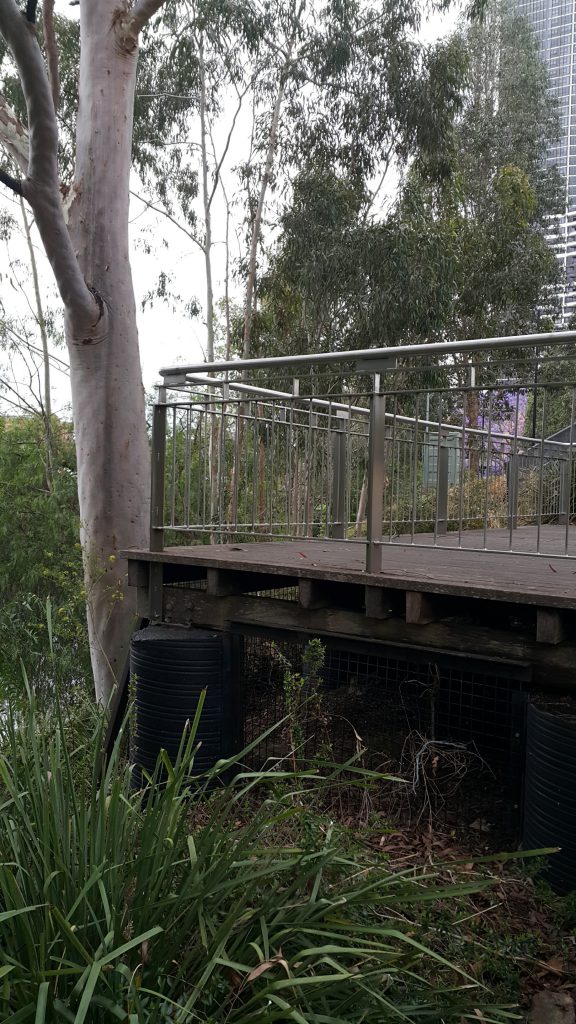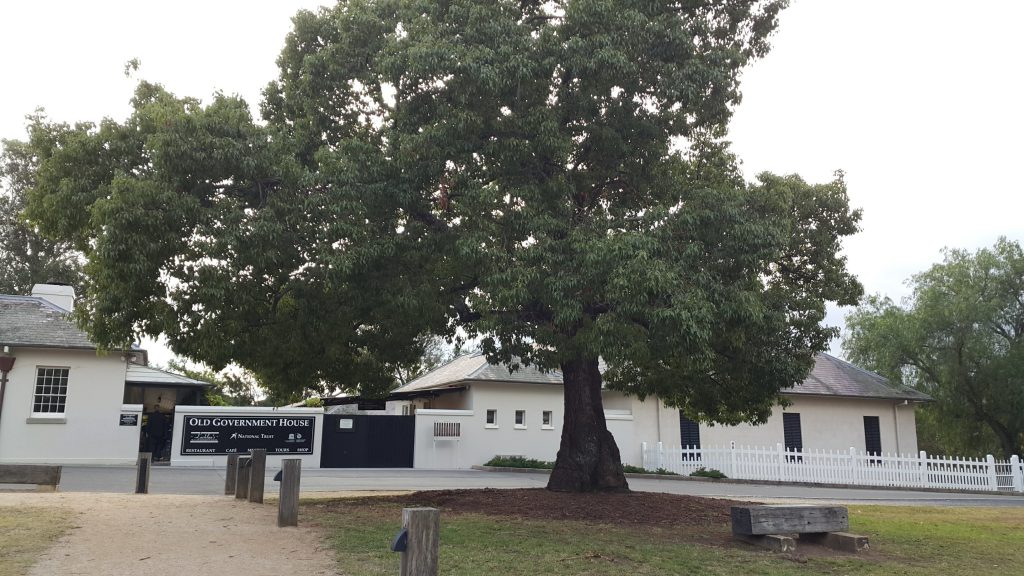When you are designing around trees, as an architect, engineer or designer, one of the most important considerations is how they will be impacted by the finished levels created by your project.
Take a look at what you need to know, as shared in Part 2 of New Leaf Arboriculture’s series on Designing Around Trees.
The Trouble with Levels
Cutting and filling around trees to create different levels on a property can have a major impact on the structure and health of the trees. On many sites, the signs of damaged trees often don’t actually show until after a building project is completed and by then it is usually too late.
Some of the common design features that unwittingly cause damage to trees are:
- Strip footings for fences and buildings
- Decks or paved areas that involve excavating or ‘scraping’ to lower levels
- Non-permeable paving
- Cut and fill or ‘site scraping’ in places with shallow soils like Sydney, even a 300mm depth can be the entire topsoil profile which tree roots rely on
- Changes requiring excavation, including underground services and retaining walls
- Landscaping in TPZ (tree protection zone) areas
All of the above can cause root damage, leading to short and long term effects on existing trees. It’s one of the reasons why an arborist report is important when you are designing a new home or working on a renovation project, as well as for larger commercial and infrastructure projects.
Minimising the Damage Caused by Levels
To avoid damaging trees, aim to create designs that avoid the need for excavation or ‘cutting’ as much as possible in their root zones.
If you picture a tree’s root system in plan view, it has large structural roots starting at the trunk and radiating outwards (not straight down as is often mistakenly thought). These branch into smaller roots as they grow further from the trunk.
Designing structures like buildings, decks, landscape seating and pavement slabs with conventional strip footings close to trees will impact the trees’ root systems, and although only one or two roots are cut, the remaining root system which emanates from those larger roots will also be lost.
When designing for levels, be aware that the fibrous or ‘feeder’ roots of a tree are located at the ends. These are the smallest roots and are often furthest from the tree, and it is those roots that keep the tree alive, functioning and thriving.
If you design a structure in close proximity to a tree and the construction crew ends up removing the structural roots the tree relies on for stability, half (or more) of the trees’ feeder root system that it needs to feed and take up water and nutrients may be lost. As a result, the tree may die or become destablished.
Best Practice for Footings
When you are designing above existing soil grades, the best way to minimise impacts on trees is to place footings carefully and allow for flexibility of footing locations, to avoid damaging tree roots. As a general rule of thumb, roots of 40mm diameter or greater should not be cut, however New Leaf can provide specific advice on site about which roots can be pruned without significantly impacting the tree, depending on tree species and site factors and in general all roots should be protected unless root pruning is approved by an arboriculturist.
Take a look at the image below. The deck has been built quite close to the tree, but the construction method of isolated piers and a suspended structure minimises the impacts to the surrounding trees and after many years the trees are still thriving.

Achieving this without damaging the tree would require some exploratory excavation first to find out if there are roots in the intended footing location and adjust accordingly if roots are found (also making sure that the new location doesn’t contain roots).
Here’s another example that demonstrates low impact landscaping around a tree.

This seat is very low impact, just sitting on top of the ground. It doesn’t need large footings that could disrupt tree roots. The path markers are also minimal and could be placed with consideration of actual tree roots encountered during the work.
Filling Land for Levels
We know excavation can seriously damage trees’ structure and health, but what about filling?
If a construction project added a large area of fill over the top of a tree’s root system, this would damage the tree. It’s not quite as bad as cutting the roots, because the structure and function of the roots remain in place, but fill over root zones can smother the roots and stop them from taking in as much water, nutrients and oxygen as they are adapted to.
This can result in slow decline of trees, and potentially decay of roots and trunks, which can in turn cause structural issues with the trees. Sometimes this decline can happen rapidly with sensitive tree species or trees already in poor health.
It seems like trees make your job impossible but there are ways we can work around trees to avoid the issues caused by cutting, filling and placement of structures.
Tree Sensitive Design Methods
Consulting arborists and tree managers refer to something called “tree sensitive design and construction methods”.
This is something that needs to be taken into consideration from the beginning of the design process. We need to be thinking about protecting trees and actively trying not to damage trees with what we’re designing on paper and planning to construct.
The three important parts of tree sensitive design methods are:
- To actively protect trees during the design process,
- To think about how we can avoid damaging the trees, and
- To involve a project arborist or consulting arborist at the beginning of the process and commission an arborist’s report so we know which trees to prioritise and how we can go about protecting them throughout the process.
Specifying Landscape Works Around Trees
When specifying landscape works like adding new plants around existing trees, make sure you minimise or avoid soil scraping and removing topsoil where the tree roots are likely to be (i.e. in the Tree Protection Zone) because this can seriously damage the trees even further than all the other construction works that may have gone on around the tree.
It’s also important to ensure the plants are in smaller container sizes (e.g. 150mm or tubestock) so that digging lots of large holes within the trees’ root zones isn’t necessary.
View more of our Designing Around Trees Series
#1 What do Architects Need to Know About Trees?
New Leaf helps people to manage their trees in a cost-effective, sustainable way to optimise the health, vitality and beauty for the benefits they provide in our communities and the global environment we live in. Contact us for a detailed arborist report or consultation.
